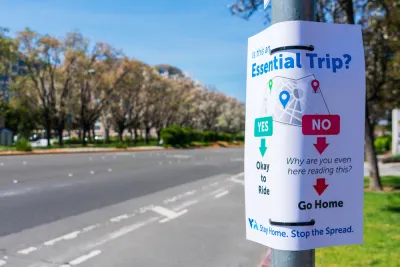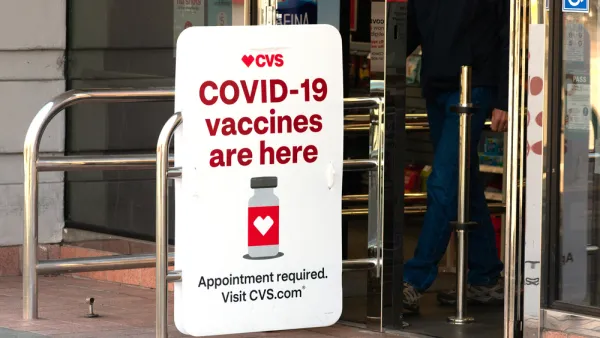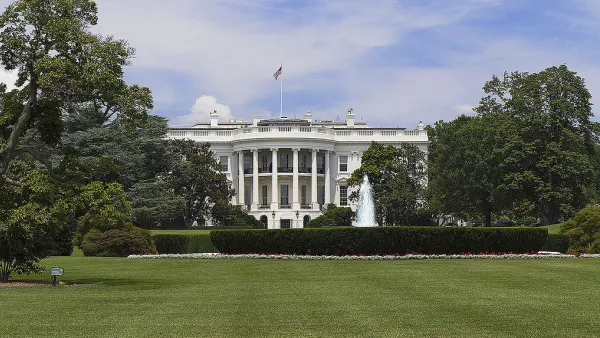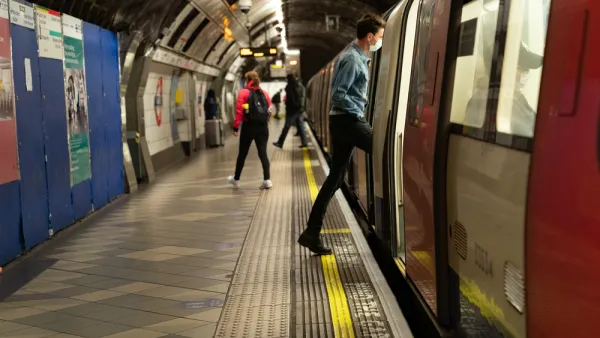It's official—the nation's leading public health agency would prefer that Americans drive alone to work to reduce exposure to the coronavirus. New CDC guidance call for government to subsidize drive-alone and single ride-share commutes.

The header of the New York Times article published on Friday dealt a body blow to transit agencies, stating that the Centers for Disease Control and Prevention (CDC) recommends, "Temperature checks, desk shields and no public transit..." in the age of the contagious novel coronavirus.
"The C.D.C. recommended that the isolation for employees should begin before they get to work — on their commute," writes . "In a stark change from public policy guidelines in the recent past, the agency said individuals should drive to work — alone."
Actually, their guidance, "COVID-19 Employer Information for Office Buildings," released May 27, does not say, "no public transit," but it's easy to see why the Times chose that wording. Their recommendations deal almost exclusively with the buildings themselves, with the exception of one bullet point under "Administrative controls: Change the way people work."
- For employees who commute to work using public transportation or ride sharing, consider offering the following support:
- Offer employees incentives to use forms of transportation that minimize close contact with others, such as offering reimbursement for parking for commuting to work alone or single-occupancy rides.
- Allow employees to shift their hours so they can commute during less busy times.
- Ask employees to wash their hands as soon as possible after their trip.
In short, the CDC is essentially telling workers to get in their own motor vehicle, drive to work, preferably during off-peak hours, and remember to wash their hands before and after their driving commute.
As for ride-sharing alternatives, the Washington Post even ruled out that option in their write-up of the new guidance:
"The CDC recommendations say workers should be encouraged to drive alone rather than sharing rides or taking public transportation," wrote and
CDC guidance for mass transit
Also on the CDC website is a "Mass Transit Decision Tool" directed to public transit agencies:
Mass transit is critical for many Americans to commute to/from work and to access essential goods and services. Mass transit may need to remain open and certain routes prioritized. Follow these guidelines for bus transit operators, rail transit operators, transit maintenance workers, and transit station workers.
Among the recommendations:
- Encourage social distancing by increasing spacing of passengers and employees, closing every other row of seats and using bus rear door entry/exit, if feasible
As for public transit within the office building, i.e., elevators, their recommendation is consistent: "Limit use and occupancy of elevators to maintain social distancing of at least 6 feet."
Related in Planetizen:
-
Elevators Are Not the Villain, May 11, 2020
-
White House Shelves Reopening Guidelines Prepared by CDC, May 10, 2020
-
Subway-Coronavirus Connection Suffers From Lack of Evidence, April 20, 2020
Hot tip to Kenyon Karl.
FULL STORY: C.D.C. Recommends Sweeping Changes to American Offices

Analysis: Cybertruck Fatality Rate Far Exceeds That of Ford Pinto
The Tesla Cybertruck was recalled seven times last year.

National Parks Layoffs Will Cause Communities to Lose Billions
Thousands of essential park workers were laid off this week, just before the busy spring break season.

Retro-silient?: America’s First “Eco-burb,” The Woodlands Turns 50
A master-planned community north of Houston offers lessons on green infrastructure and resilient design, but falls short of its founder’s lofty affordability and walkability goals.

Test News Post 1
This is a summary

Analysis: Cybertruck Fatality Rate Far Exceeds That of Ford Pinto
The Tesla Cybertruck was recalled seven times last year.

Test News Headline 46
Test for the image on the front page.
Urban Design for Planners 1: Software Tools
This six-course series explores essential urban design concepts using open source software and equips planners with the tools they need to participate fully in the urban design process.
Planning for Universal Design
Learn the tools for implementing Universal Design in planning regulations.
EMC Planning Group, Inc.
Planetizen
Planetizen
Mpact (formerly Rail~Volution)
Great Falls Development Authority, Inc.
HUDs Office of Policy Development and Research
NYU Wagner Graduate School of Public Service




























